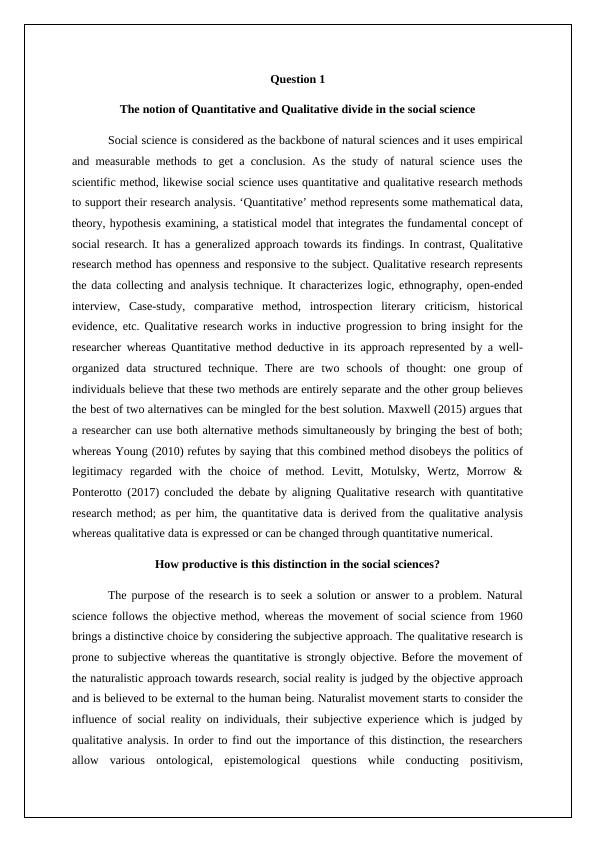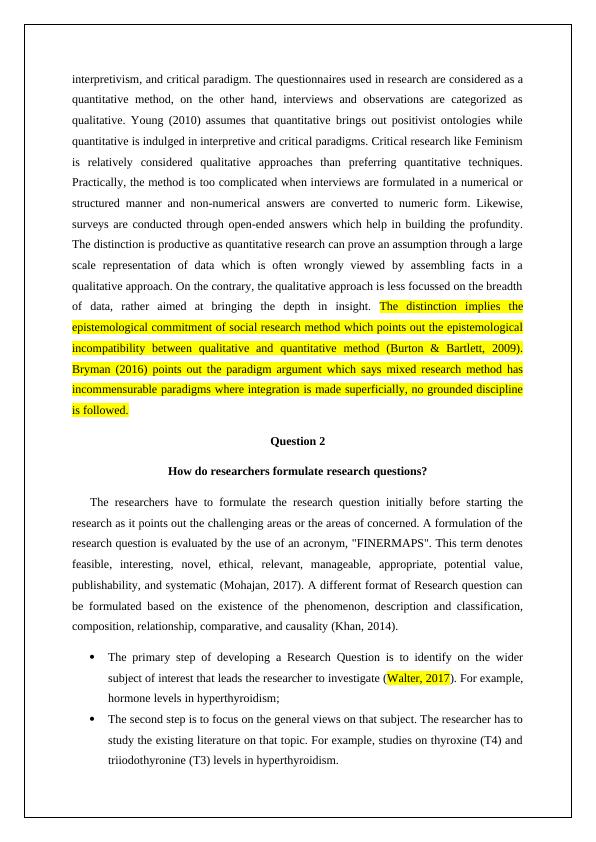The Notion of Quantitative and Qualitative Divide in the Social Science
This text is part of a series on Education Studies and provides an overview of the subject and introduces fundamental theories and debates in the field.
6 Pages1592 Words83 Views
Added on 2022-12-22
About This Document
This article discusses the distinction between quantitative and qualitative research methods in social science and their productivity. It explores the debate surrounding the use of these methods and their compatibility. Additionally, the article provides insights into how researchers formulate research questions using the FINERMAPS acronym.
The Notion of Quantitative and Qualitative Divide in the Social Science
This text is part of a series on Education Studies and provides an overview of the subject and introduces fundamental theories and debates in the field.
Added on 2022-12-22
ShareRelated Documents
End of preview
Want to access all the pages? Upload your documents or become a member.
Research on Research Methodology and Approach
|11
|1919
|64
Ontology and Epistemology in Social Science Research
|6
|1893
|242
Evidence-based medicine ( Doc)
|11
|2974
|30
Ethical Concerns in Qualitative Research Assignment
|5
|819
|494
Assignment on Therapeutic Alliance and Outcome of Psychotherapy
|4
|1199
|164
Usage of Social Media to Create Brand Awareness of Product Among Consumers: A Cookie Dough T.O
|10
|2590
|98



